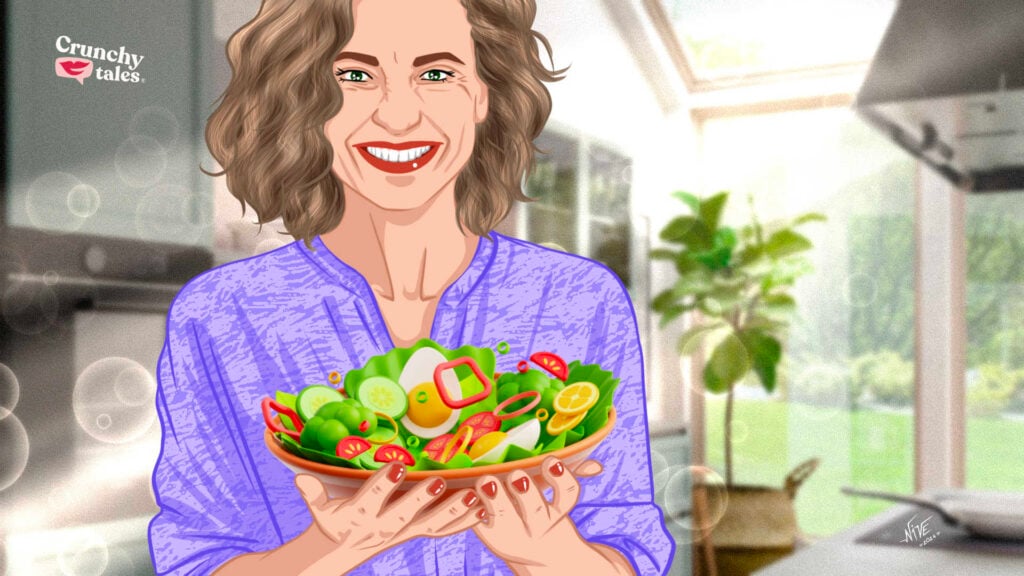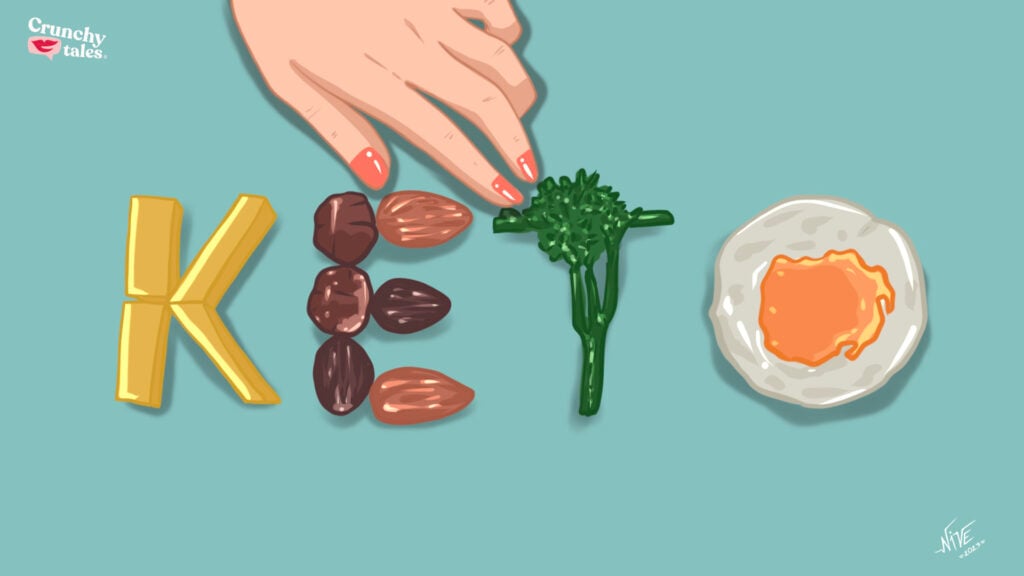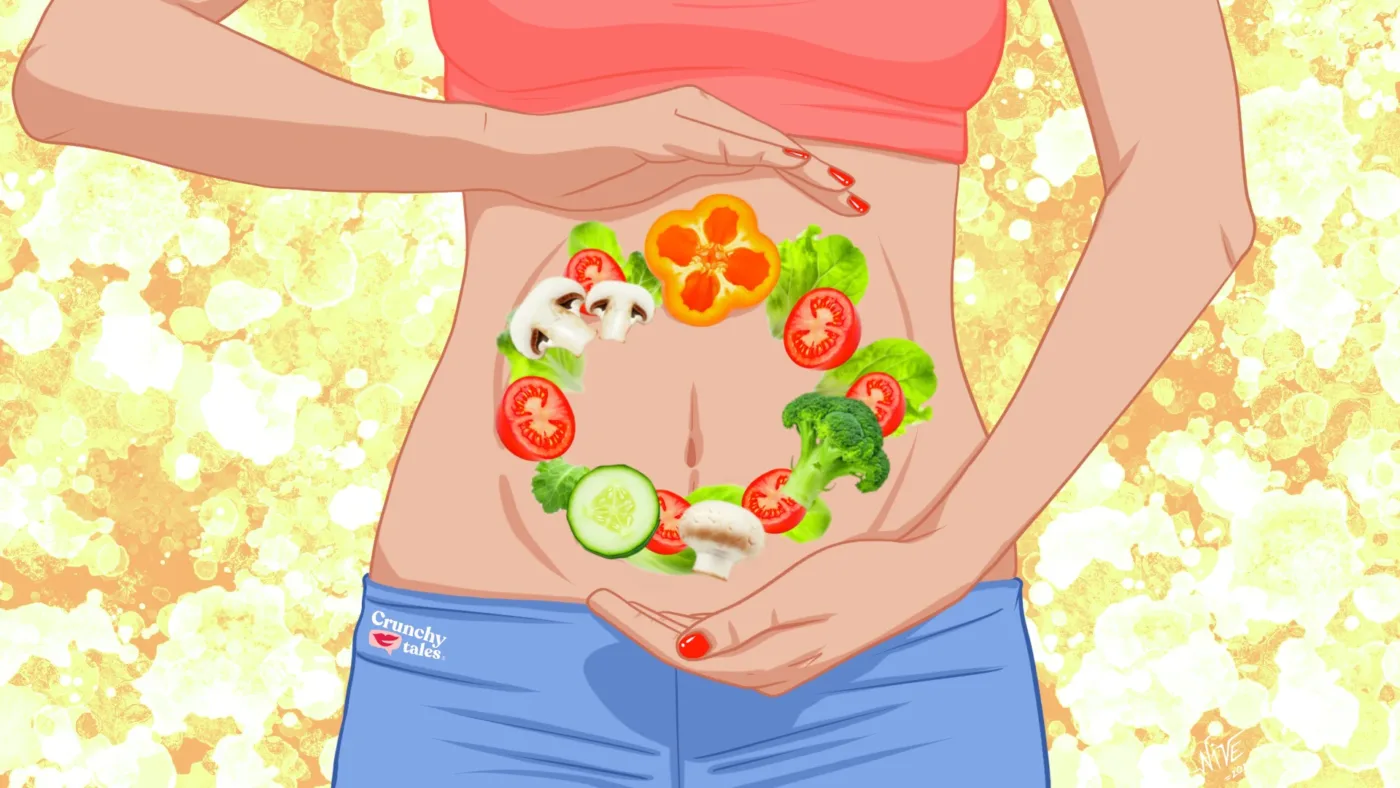Revamp Your Diet After 50: 10 Easy Tips for a Springtime Refresh
Sticking to a diet can be tough, especially after 50, but Spring is a season of renewal and just like flowers in bloom, you can refresh your eating habits to match your evolving nutritional needs (as we age, we need fewer calories but more protein).
Before altering your diet, however, shift your mindset and start with a good dose of self-acceptance. Rather than starving your body because you hate the way you look and feel, cultivate self-compassion and body awareness—plant seeds of self-kindness rather than self-criticism. You’ll feel better about your body and yourself and be more motivated to stick to a healthier diet.
Whether your goal is to boost energy, maintain a healthy weight, or support heart and brain health, take the long view. Rather than restricting and going on another low calorie, fad diet, make a few small changes every week. By summer you’ll be healthier, have more energy and may find that you’ve dropped a dress size or two.
Here are 10 expert tips to revitalize your nutrition after 50 this spring. Ready to bloom again?

Revamp Your Diet: Start Your Day with Savory Instead of Sweet
This tip is a total game changer because what you eat first thing in the day sets you up for success all day long. After fasting at night, what you eat for breakfast influences your metabolism and sets the pace for your energy and blood sugar levels all day long.
Having a savory breakfast that’s packed with protein, healthy fats, and fiber (like two eggs and multi-grain toast with almond butter) will stabilize your glucose levels. Not only will you feel better and have more energy, but you may also reduce menopausal symptoms such as brain fog and hot flashes. Plus, it will help reduce sugar cravings and inflammation.
Swap Calorie and Macro Counting for Nutrient Density
Rather than obsessing over exact calorie numbers or macronutrient ratios, look at the quality and nutritional value of what you eat. Dense foods are packed with nutrients, not empty calories (refined carbs like white flour, sugar, and corn syrup,) supporting your body and helping you feel satisfied with fewer calories.
Focusing on them, along with eating more whole foods, is an easy, simple path to improve health, energy levels, and overall relationship with food.

Springtime Refresh: Load Up on Local and Seasonal Produce
Along with migrating birds and flowers, one of the lovely things about spring is the arrival of fresh, local produce rich in fiber and phytochemicals. Visit a local farm, a farmer’s market or join a CSA (Community Supported Agriculture). Enjoy asparagus and rhubarb (generally the first produce to grow in spring) along with spinach, radishes, strawberries, and artichokes to brighten your plate and give your body a natural spring cleaning.
Grow Your Own
To up your produce consumption, plant a few seeds yourself this spring. You don’t have to create a huge garden to enjoy growing your own food.
Try sprouting. It’s easy, fun, and nutritious. Put a few tomato plants on your terrace or scatter some baby lettuce seeds and herbs in a window planter. Your microbiome will thank you.
Optimize Gut Health
Research shows that as women undergo the menopausal transition and estrogen declines, their gut flora (the microorganisms in our digestive tract) also changes. After menopause, women tend to have less diversity of microorganisms and fewer good gut bacteria. These microbiome changes can create an imbalance in the gut and put women at a greater risk for health issues, including depression and obesity. While more research is needed, one study of 1000 found that postmenopausal women had increased levels of bacteria associated with inflammation and obesity.
A more balanced gut microbiome boosts digestion, immunity, and mood. You can improve your gut healthy by eating probiotic-rich foods like yogurt, kimchi, and sauerkraut, along with prebiotic foods (fruits, vegetables, whole grains, legumes, seaweed).

Skill Power Over Willpower
Willpower is highly overrated. Just think about what happens when you cut out foods you love: do you want them more or less?
Meal planning works better. It will help you make healthier choices, save time, and reduce food waste. Spend some time prepping fresh, nutritious meals each week and you’ll always have something healthy available. Plan your meals and snacks and stock your kitchen and office with healthy foods. That way, when hunger strikes, you’ll be ready.
For example, keep phytochemical, fiber, and protein-packed snacks at the office, such as frozen blueberries, Greek yogurt, and iced green tea, and keep an ounce of almonds and an apple in your purse. When the 3 p.m. energy dip hits, you’ll have healthier options then visiting the vending machine for a candy bar and Diet Coke.
Eating out? Look at the menu after lunch when you are full and decide what you are going to have for dinner then instead of at 7 pm when you’re hungry, tired and have had a cocktail.
And when it comes to sweet treats such as chocolate, have a small portion at the end of a fiber rich, protein packed meal that also contains healthy fats to help keep your blood sugar in balance.
Things to Add: Water and Protein
Proper hydration becomes more critical as we age since our sense of thirst diminishes. Buy a cute water bottle, keep it filled, and set a reminder to drink some water at least once an hour. Swap sugary drinks for herbal teas and infused water to keep your body refreshed and energized.
Muscle mass naturally declines with age and decreases in muscle mass. Eating more lean proteins like fish, eggs, tofu, and legumes helps maintain strength and metabolism. Salmon and sardines, rich in omega-3s, also support brain and heart health. Your body can only use a limited amount of protein at a time so spread your protein intake out so that you consume some protein at every meal (around 20 grams) and snack (around 10 grams).
Eat More Intuitively and Mindfully
Slowing down and truly savoring your meals can help with digestion, portion control, and overall enjoyment. Try sitting down without distractions (put away the cellphone and turn off the TV) and appreciating the flavors and textures of your food.
Start by taking a moment to say grace. Thank all the hands that went into getting the food to your plate and notice how the food looks and smells before taking a bite. Take a bit and really taste your food. Throughout the meal check in with your body and notice how full you feel. Setting a timer to help you take at least 20 minutes to eat and/or eating with chopsticks or your left hand can also help you to slow down and eat more mindfully.
During the day check in with your signals of hunger and satiety to determine if you need to eat, especially if you are an emotional eater.

Refresh Your Cooking Methods
Spring is a great time to embrace lighter cooking techniques. Instead of frying, try grilling, stir-frying, steaming, or roasting your foods to retain nutrients while enhancing flavor. You may also want to try new gadgests like an air-fryer or instapot.
For inspiration buy a new healthy cookbook, visit healthy cooking websites or follow influencers who specialize eating healthy eating. Consider going meatless for some of your meals. For tips on how to eat more of a plant-based vegan diet, visit websites such as Forks Over Knives.
Listen to Your Body
Last but not least, your body and nutritional needs are unique, so pay attention to how different foods make you feel. If a certain food causes bloating, fatigue, or discomfort, consider reducing or eliminating it to support optimal digestion and energy levels. Keeping a food journal can help you track how certain foods make you feel.
By making small, intentional changes, you can feel more vibrant, energized, and ready to embrace the season with renewed vitality. Start incorporating these tips today and enjoy the benefits of nourishing your body at every stage of life. And don’t forget to reward yourself. All foods fit into a healthy diet and life.
Like this article? Sign up to our newsletter to get more articles like this delivered straight to your inbox.






This Post Has 0 Comments